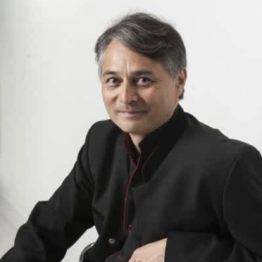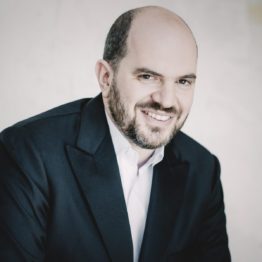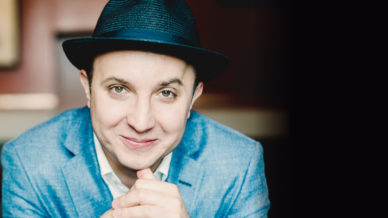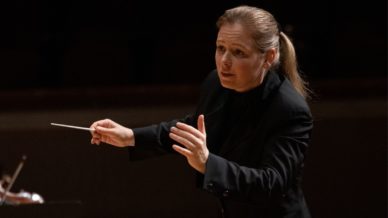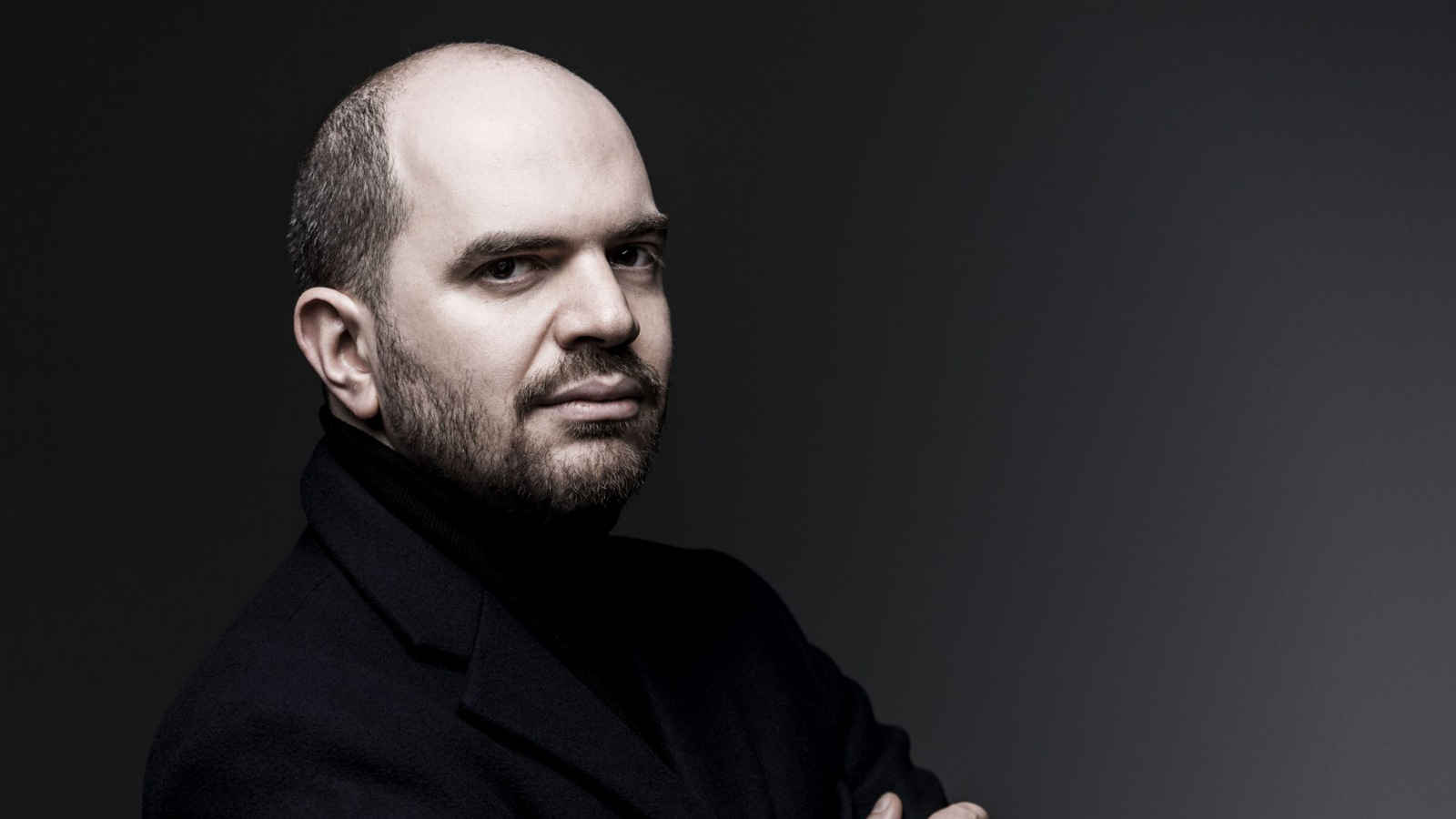

Dvořák’s New World Symphony
April 14 – 16, 2022
JUN MÄRKL conducts
KIRILL GERSTEIN piano
MENDELSSOHN Meeresstille und glückliche Fahrt (Calm Sea and Prosperous Voyage) Overture
SCHUMANN Piano Concerto
DVOŘÁK Symphony No. 9, “From The New World”
Mendelssohn’s inspirational overture, based on two poems by Goethe, brilliantly depicts the immobility of a becalmed sea to the redemptive vitality of a rising wind and the promise of homecoming.
Schumann’s dramatic piano concerto, composed at the urging of his wife and virtuoso pianist Clara, explores the breadth and depth of love through a beautiful interaction of piano and orchestra.
Dvořák’s famed and final symphony is a musical testament to the “New World” he found in New York City – it brims with brass fanfares, Bohemian and Czech dance rhythms, and utilizes folk tunes like Swing Low, Sweet Chariot as melodic motivators.
For information on our COVID-19 safety protocols, please visit here.

Program Notes
by René Spencer Saller
Although the term overture suggests otherwise, the Calm Sea and Prosperous Voyage overture wasn’t meant to introduce an opera or another work. In the 19th century, single-movement compositions in sonata form were called concert overtures and expected to stand independently. Not completely independently, of course: They often entailed a descriptive program, whether literary or pictorial. In the present instance, the program consists of two poems by Germany’s most revered public intellectual, Johann Wolfgang von Goethe (1749–1832).
By the time Felix Mendelssohn was in his late teens, he had completed almost 100 compositions, including operas, quartets, concertos, and a magnificent octet for strings. In 1828, when the 19-year-old prodigy composed the Calm Sea and Prosperous Voyage Overture, he had seen the ocean only once in real life. (This would change a couple of years later, when he composed his famous Hebrides Overture, inspired by a tumultuous sea voyage that he took in Scotland.) With first-person experience lacking, Mendelssohn took his seascape inspiration from another source: Goethe.
Mendelssohn was first presented to the elderly poet when he was 12 years old, and the two became instant friends. Goethe, who had met Mozart at the same age, raved about the boy’s genius: “What [Mendelssohn] already accomplishes bears the same relation to the Mozart of that time that the cultivated talk of a grown-up person bears to the prattle of a child.”
Although the two Goethe poems (“Calm Sea” and “Prosperous Voyage,” both published in 1795) had already been treated to famous interpretations by Beethoven and Schubert, those composers had written a cantata and a song, respectively. Mendelssohn wanted to keep his own marine diptych purely instrumental. Whether by happenstance or intention, he chose the same key signature as Beethoven’s choral setting: D major. He would have assumed that his audience knew the poems well, perhaps even by heart, and he would have expected them to understand why calm seas feel so ominous to sailors, and why strong winds bring on triumph and prosperity. With his two-part concert overture, Mendelssohn made a kind of soundtrack to a film that didn’t exist, except in the minds of poetry lovers.
Calm Sea
Calm and silence rule the water,
motionless the ocean lies,
and the sailor’s anxious gaze
finds glassy flatness far and wide.
Not a breath of air is stirring!
Fearful, deathless stillness reigns!
On the infinite expanse
not a single wavelet moves. —Goethe, 1795
Prosperous Voyage
The mists are rent,
the heavens shine,
and Aeolus loosens
restraining ties. The winds now are whistling,
the sailor bestirs himself.
How swiftly; how swiftly
the distance draws near;
and now I see land. —Goethe, 1795
The Composer Speaks
“The introduction I planned in this way: that a pitch gently sustained by the strings for a long while hovers here and there and trembles, barely audible, so that in the slowest Adagio, now the basses, now the violins, rest on the same pitch for several bars. The whole stirs sluggishly from the passage with heavy tedium. Finally it comes to a halt with thick chords, and the Prosperous Voyage sets out. Now all the wind instruments, the timpani, oboes, and flutes begin and play merrily to the end.” —Felix Mendelssohn
Since at least 1827, Robert Schumann had been trying, and failing, to write a piano concerto. In 1839, the year before their marriage, he wrote to Clara Wieck about his protracted struggle: “Concerning concertos, I’ve already said to you they are hybrids of symphony, concerto, and big sonata. I see that I can’t write a concerto for virtuosi and have to think of something else.” (If he sounds testy, imagine the pressure he must have been getting from his fiancée, a former child prodigy and the most famous concert pianist of her time.)
In 1841, he gave his young bride the Fantasie in A minor for piano and orchestra. She was delighted with the single-movement work, remarking in their marriage diary that “the piano is most skillfully interwoven with the orchestra; it is impossible to think of one without the other.” But after two private performances, the Fantasie foundered. Unable to sell it to a publisher, Schumann put it aside and focused on chamber music while his depression worsened.
From Fantasie to Concerto
At the end of 1844, a particularly wretched year, the Schumann clan moved to Dresden, and Robert returned to the concerto challenge. This time he had a plan. After some revisions, the Fantasie became the first movement of a concerto. In 1845 he added an intermezzo and a finale. Taken together, the three movements fulfill a promise he had made in an essay published six years earlier: “We must await the genius who will show us in a newer and more brilliant way how orchestra and piano may be combined, how the soloist, dominant at the keyboard, may unfold the wealth of his instrument and his art, while the orchestra, no longer a mere spectator, may interweave its manifold facets into the scene.”
He was that genius, of course, and, masculine pronoun notwithstanding, Clara was the soloist at the Dresden premiere on December 4, 1845.
Clara did more than perform the work over and over again until her death, a half-century later. She is encoded into its DNA. Take the lambent, yearning main theme, first sung by the oboe. As the late Michael Steinberg explained, “Bearing in mind that what we call B-natural the Germans call H, you can see that the first four notes of the oboe theme could be taken to spell Chiara, or CHiArA, using those letters that have musical counterparts (C/B/A/A) in this Italian version of Clara’s name….”
Despite being composed over four turbulent years, the concerto is a miracle of coherence. Schumann spun out a wealth of melodies for his second and third movements by reconfiguring the first movement’s main theme. The lustrous intermezzo shows off the skills he had honed during his chamber-music sabbatical. The finale contains some blazing bravura passages, certainly, but they’re not the central concern. Whether forging new melodic paths or supporting other instruments, the piano is always essential, but that doesn’t make it most important. Listen to the back-and-forth of the winds and the piano in the opening movement. Listen to the fervent cello-piano pairing in the Intermezzo’s second theme. Listen to the ways in which the opposing rhythms of two- and three-beat patterns—hemiola, the music-nerds call it—galvanize the finale. This concerto shines because of its relationships.
In September 1892, Antonín Dvořák, his wife, and two of their six children set sail for New York City, where they spent most of the next three years. Unlike so many other Czech immigrants before and after them, they weren’t hoping to start a new life in the New World. Internationally successful, the 51-year-old composer was lured to the United States by Jeannette Thurber, a wealthy philanthropist and Paris-trained musician. She had already successfully lobbied Congress to establish the National Conservatory of Music, her brainchild and life’s mission. Now she wanted Dvořák to serve as its director. He was reluctant at first, but the proposed salary of $15,000—more than 20 times what he had been earning at the Prague Conservatory—was too tempting to refuse.
When he wasn’t teaching or composing, the celebrated Bohemian strolled through Central Park and hobnobbed with other European émigrés in local bars and cafés. He enjoyed his work, but he was homesick. He spent his first American summer break in Spillville, a small farming community in northeastern Iowa populated mainly by Czech immigrants. Dvořák, the son of a butcher, was delighted to learn that the Spillville butcher shared his surname.
New World, New Sounds
In May 1893, when Dvořák was putting the finishing touches on his Symphony No. 9 in E minor (“From the New World”), he proclaimed in the New York Herald, “I am now satisfied that the future music of this country must be founded upon what are called Negro melodies. This must be the real foundation of any serious and original school of composition to be developed in the United States.”
The Ninth Symphony was the first of several works that he composed entirely in the United States, from preliminary sketches to final orchestration. Although he urged his National Conservatory students to explore indigenous musical forms, he had at that point heard only a smattering of American folk songs, notably the Negro Spirituals that his assistant Henry Burleigh sang for him. Dvořák was also fascinated by Henry Wadsworth Longfellow’s popular poem “The Song of Hiawatha,” a highly Romantic (and wildly inaccurate) depiction of Native American life.
So just how American is the New World symphony? Although many listeners swear that they hear snatches of such classic folk tunes as “Turkey in the Straw,” “Three Blind Mice,” and “Swing Low, Sweet Chariot,” the composer’s own remarks on the subject are contradictory. While writing the Ninth, he declared that “the influence of America can be felt by anyone who has a nose.” But five years after his departure from the United States, he told a conductor preparing the Ninth for performance that he should “leave out the nonsense about my having made use of American melodies. I have only composed in the spirit of such American national melodies.” Elsewhere, he described all the compositions he wrote in the United States as “genuine Bohemian music,” claiming that the Ninth’s title was meant only to describe “impressions and greetings from the New World.”
Symphonic Success
Questions of authenticity aside, the Ninth is Dvořák’s most famous symphony for simple and universal reasons. It is immensely satisfying, with sticky tunes and a coherent structure. The orchestration is luscious but judicious; the sonorities are imaginative and affecting. The four movements are unified by the cyclical nature of its themes, which are woven throughout the work in myriad patterns and colors.
The first movement, a moody Adagio, alternates heroic Wagnerian grandeur with jolly, almost fiddle-like interludes fringed with lissome winds. The Largo showcases the iconic English horn theme, which is echoed and transformed by other instrument groups; at the midpoint, a new theme burbles up in the winds, a brief birdsong idyll. The hectic Scherzo, a mood- and meter-shifting succession of dance forms, marshals scurrying strings, galloping cadences, and jingling triangle. The finale brings it all back home, thematically and emotionally, synthesizing all the preceding material. As promised by the Allegro con fuoco tempo indication, it is fast and fiery, but it also offers moments of surpassing sweetness.
The December 1893 premiere at Carnegie Hall by the New York Philharmonic was an unqualified triumph. Audience members applauded after each movement and even compelled the composer to rise with their loud cheers at the conclusion of the Largo.
Spiritual Successors
Among the many gifted members of the National Conservatory’s diverse student body was Dvořák’s African American assistant Henry (“Harry”) Burleigh, who introduced the composer to what would soon become his favorite form of American folk music: the Negro Spiritual. For the symphony’s most famous theme, Dvořák chose the English horn because it reminded him of Burleigh’s voice. This deceptively simple, deeply moving melody—apotheosized in the second movement but present, in some form or another, throughout—wasn’t a quotation from an existing spiritual, as many listeners mistakenly insist.
In 1922 William Arms Fisher, another of Dvořák’s former students, added lyrics to Dvořák’s original theme, thereby creating the nostalgic ballad “Goin’ Home.” This version made the tune familiar to many more people, including people who seldom set foot in concert halls.
In an essay titled “The Negro And His Song,” Burleigh reminisced about his close association with the Bohemian composer:
“While I was never a student of Dvořák, not being far enough advanced at that time to be in his classes, I was constantly associated with him during the two years that he taught in the National Conservatory in New York. I sang our Negro songs for him very often and, before he wrote his own themes, he filled himself with the spirit of the old Spirituals.”
Burleigh went on to become a respected composer and arranger. His arrangement of “Deep River” was the first spiritual to enter the concert repertoire.
